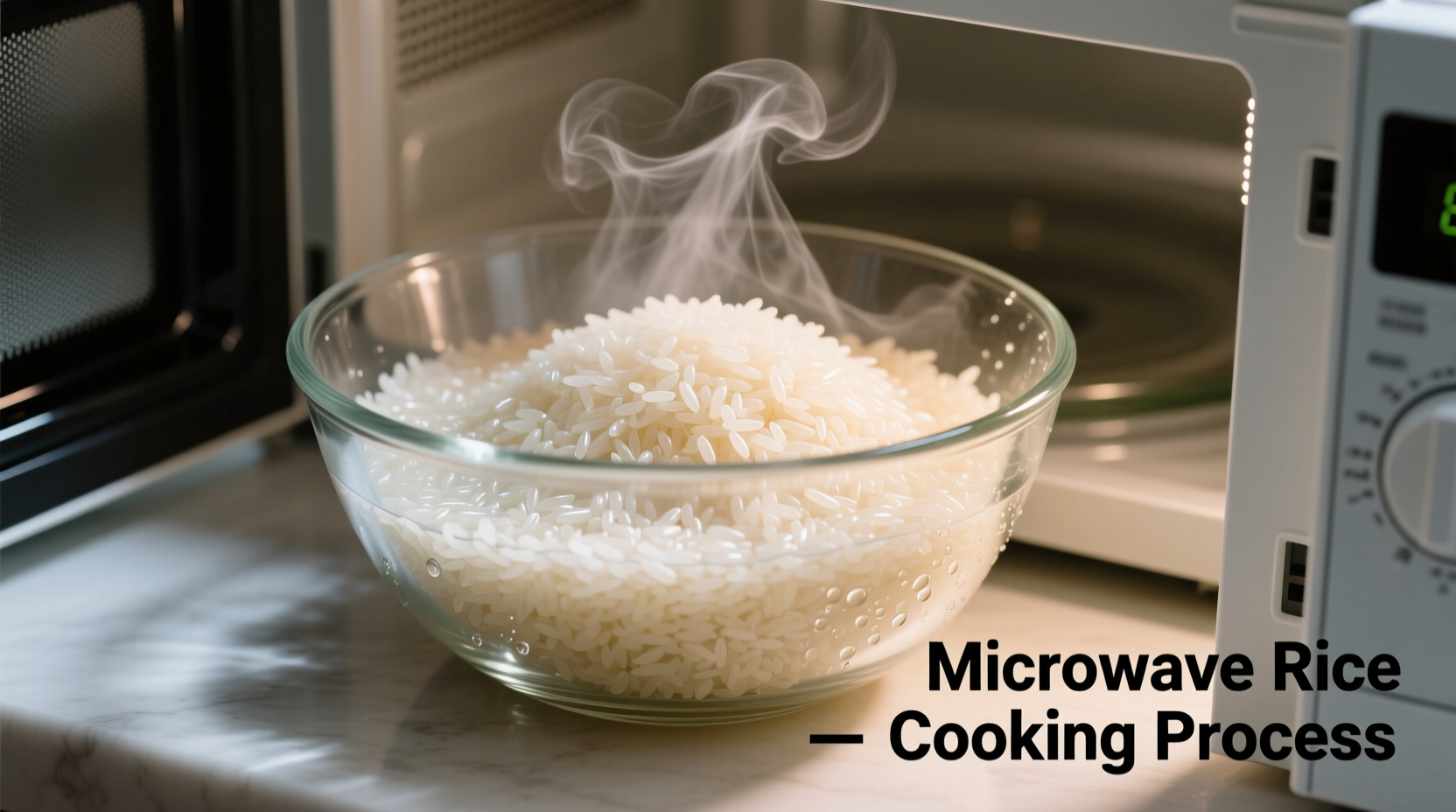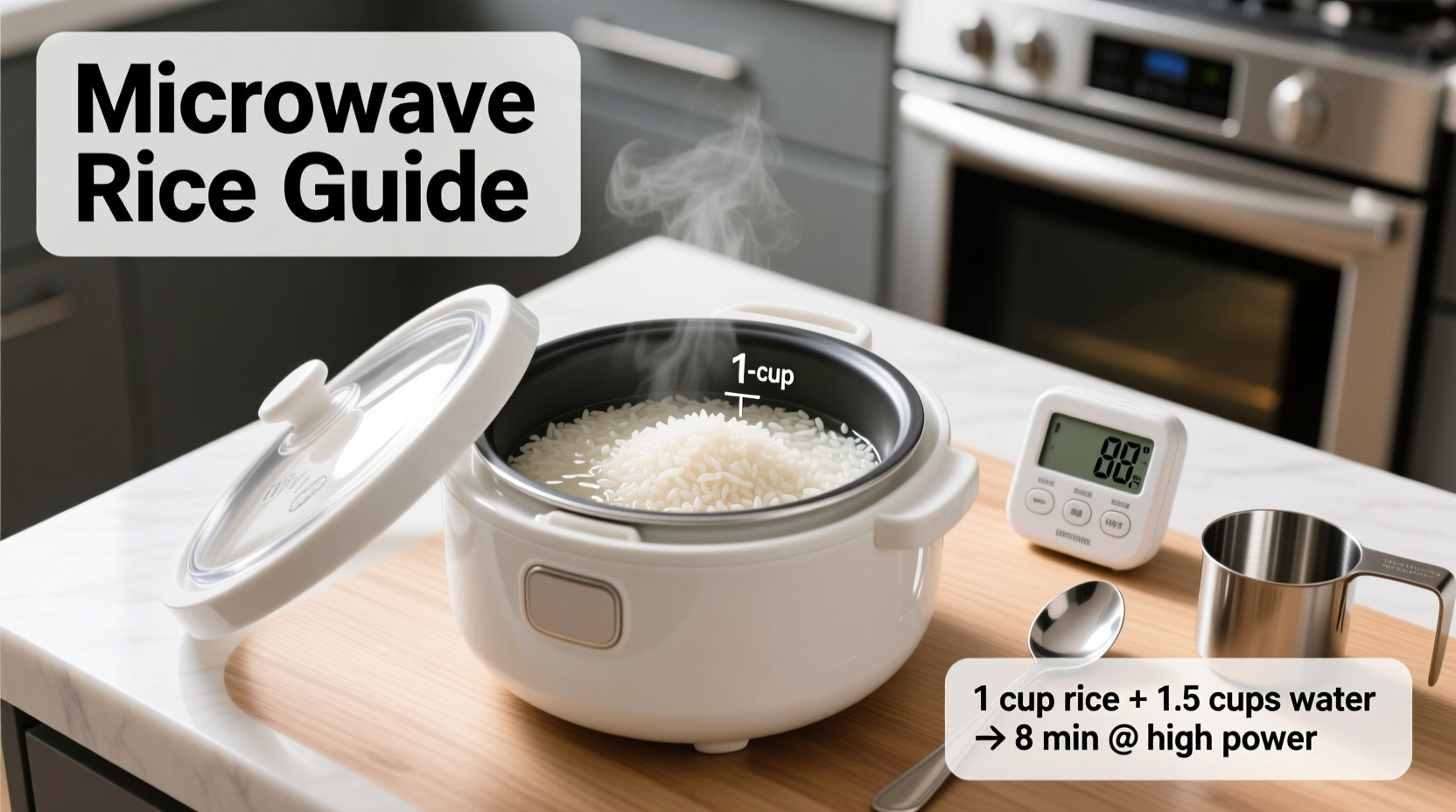Discover the fastest, most reliable way to prepare perfect rice using just your microwave. Whether you're cooking for one or need a quick side dish, this method eliminates guesswork and delivers consistent results every time. No rice cooker required—just basic kitchen tools you already own.
The Science Behind Perfect Microwave Rice
Microwave cooking works differently than traditional methods, using electromagnetic waves to heat water molecules directly within the rice. This creates steam that cooks the grains from the inside out. According to food science research from Oregon State University Extension, proper water absorption is critical—rice needs to reach 80% moisture content to properly gelatinize starches without becoming mushy.
Unlike stovetop cooking where heat comes from below, microwaves distribute energy more evenly through the rice-water mixture. This reduces the risk of burning while requiring less monitoring. The key to success lies in precise water ratios and proper resting time after cooking.
Your Step-by-Step Microwave Rice Guide
Follow these professional-tested steps for foolproof results every time. This method works best with standard long-grain white rice but can be adjusted for other varieties.
Preparation Phase: Setting Up for Success
Start with these essential preparations:
- Choose the right container: Use a microwave-safe bowl with high sides (at least 4 inches) to prevent boil-overs. Glass or ceramic works best.
- Rinse your rice: Place rice in a fine-mesh strainer and rinse under cold water for 30 seconds to remove excess surface starch that causes stickiness.
- Measure precisely: Use the same cup for both rice and water measurements to maintain proper ratios.
Cooking Phase: Timing and Technique
Microwave power levels significantly impact results. Most home microwaves operate at 700-1200 watts—adjust timing accordingly:
| Rice Quantity | Water Ratio | 700W Microwave | 1000W+ Microwave |
|---|---|---|---|
| 1 cup raw rice | 1:1.5 | 14 minutes | 12 minutes |
| 2 cups raw rice | 1:1.65 | 16 minutes | 14 minutes |
| 3 cups raw rice | 1:1.75 | 18 minutes | 16 minutes |
Combine rinsed rice and measured water in your bowl. Microwave uncovered on high power. Halfway through cooking time, carefully swirl the bowl (without stirring) to redistribute grains. When cooking completes, the water should be fully absorbed with no visible liquid.
Resting Phase: The Critical Final Step
Immediately cover the bowl with a microwave-safe plate or lid after cooking. Let stand undisturbed for 10 minutes—this allows residual steam to finish cooking the rice and helps grains firm up. Skipping this step causes mushy texture. After resting, fluff gently with a fork before serving.

Troubleshooting Common Microwave Rice Problems
Even with precise measurements, issues can occur. Here's how to fix them:
When Rice Turns Out Too Wet
If rice remains soggy after resting:
- Microwave uncovered in 60-second intervals until excess moisture evaporates
- Next time, reduce water ratio by 2-3 tablespoons
- Ensure you're using the correct power setting—lower wattage requires longer cooking
When Rice Is Too Dry or Hard
If grains remain hard or dry:
- Add 2 tablespoons of hot water and microwave covered for 60 seconds
- Next time, increase water ratio slightly (up to 1:1.75 for 1 cup rice)
- Verify your microwave's actual wattage—many operate below labeled capacity
Adapting the Method for Different Rice Varieties
While this technique works best for standard long-grain white rice, you can adapt it for other types with these adjustments:
Brown Rice Conversion
Brown rice requires more water and longer cooking due to its bran layer. Use a 1:2 water ratio and add 3-4 minutes to cooking time. Let rest 15 minutes instead of 10 for proper texture development.
Jasmine and Basmati Varieties
These aromatic rices need slightly less water (1:1.3 ratio) and benefit from a 5-minute soak before cooking. Reduce cooking time by 1-2 minutes to maintain their delicate texture.
Special Considerations and Limitations
Microwave rice cooking excels for small batches (1-3 cups raw rice) but has limitations. According to USDA Food Safety guidelines, rice must reach 165°F (74°C) to be safe—microwave cooking typically achieves this when water is fully absorbed. However, for large quantities (over 3 cups raw rice), stovetop or rice cooker methods provide more consistent results due to uneven microwave energy distribution.
Microwave cooking isn't ideal for sushi rice or risotto, which require precise moisture control throughout the cooking process. For these specialty dishes, traditional methods remain superior.
Pro Tips for Enhanced Flavor and Texture
- Add a pinch of salt to the water for improved flavor development
- Substitute half the water with broth for richer tasting rice
- Place a paper towel between bowl and cover to absorb excess moisture
- Freeze leftover rice in 1-cup portions for quick future meals
- Reheat leftovers with 1-2 teaspoons of water to restore moisture











 浙公网安备
33010002000092号
浙公网安备
33010002000092号 浙B2-20120091-4
浙B2-20120091-4